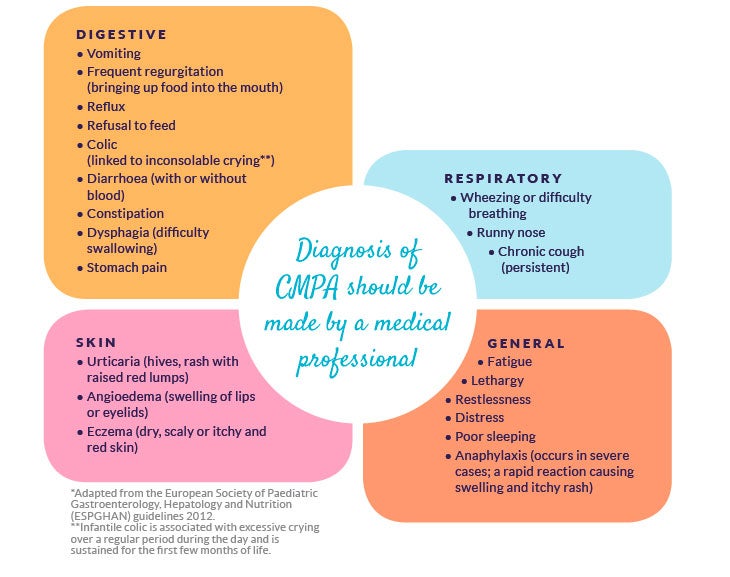The signs and symptoms linked with CMPA, ranging from colic and reflux to constipation, diarrhea and crying, make diagnosis a real challenge. Every case of CMPA is also unique, so it helps to be aware of all the possible symptoms to look out for. There are three main categories of symptoms*, including skin, digestive and respiratory and also a fourth category of more general signs*. These signs or symptoms can appear immediately, i.e., within minutes up to two hours of ingesting cow’s milk, or after several hours or days, depending on the nature of the reaction.
If you think your baby is suffering from the signs and symptoms of CMPA or other food allergies, it is important that you set up an appointment with your healthcare professional and prepare for your visit.
Diagnosis of CMPA should always be made by a medical professional

Skin Symptoms
Skin symptoms are occurring in 50 to 70 percent of cases of cow’s milk protein allergy. Among the possible symptoms are urticaria (hives, rash with raised red lumps), angioedema (swelling of lips or eyelids) and eczema (dry, scaly or itchy and red skin).
Digestive Symptoms
Digestive symptoms occur in 50 to 60 percent of cases of cow’s milk protein allergy. These include vomiting, frequent regurgitation, reflux, refusal to feed, colic (linked to inconsolable crying**), diarrhea (with or without blood), constipation, dysphagia (difficulty swallowing) and stomach pain.
Respiratory Symptoms
Respiratory symptoms occur in approximately 20 to 30 percent of cases of cow’s milk protein allergy. They and may include wheezing or difficulty breathing, runny nose and a chronic cough.
General Symptoms
Finally, general symptoms to look out for include fatigue, lethargy, restlessness, distress, poor sleeping, inconsolable crying and anaphylaxis (occurs in severe cases; a rapid reaction causing swelling and itchy rash).